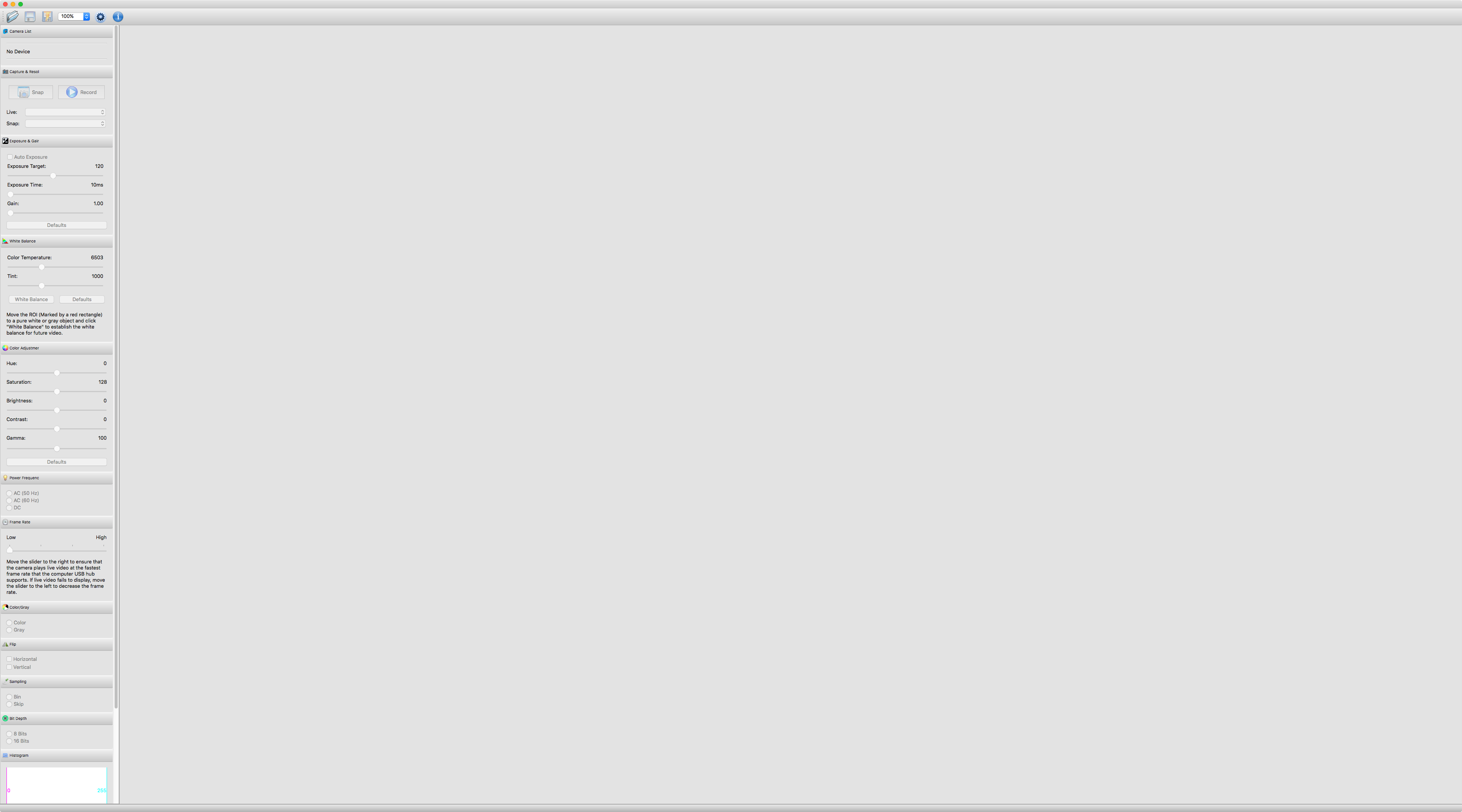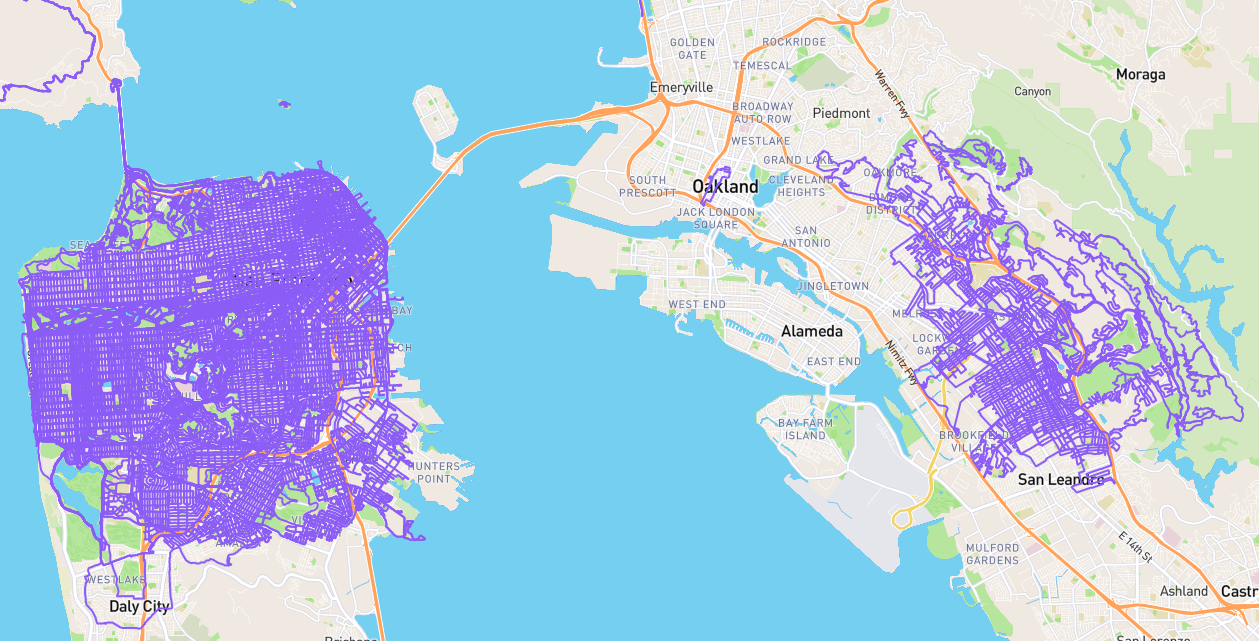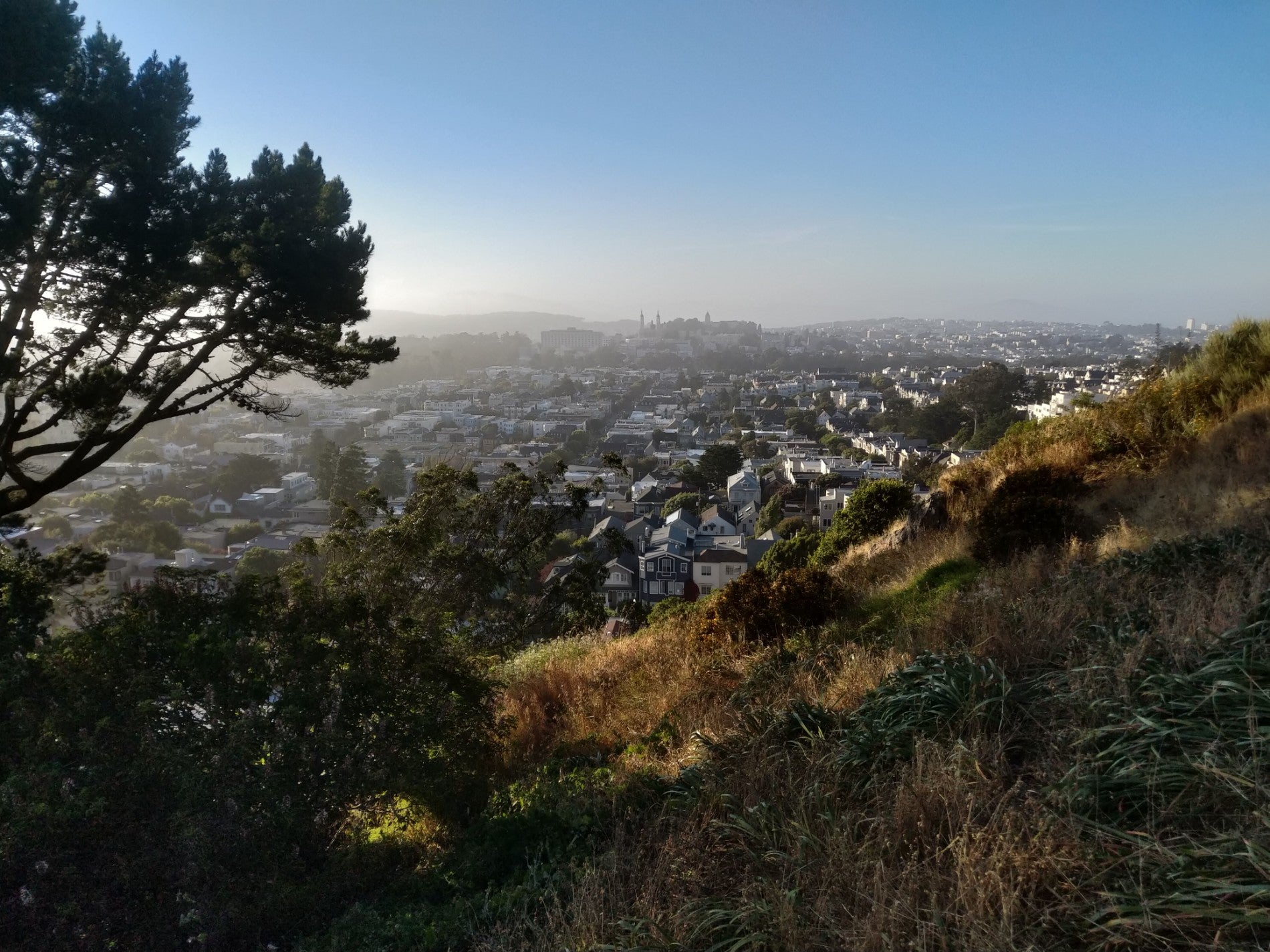OMAX software and micrometer sample images
I’ve been getting acquainted with my new microscope and its digital camera software. I initially decided to buy a microscope based mostly on the USB camera resolution finally exceeding a few megapixels without costing thousands of dollars. After these tests, it looks like I may end up not using the USB camera much after all, due to difficulty getting the colors right. Thankfully I decided to try a Nikon SLR adapter, as photos through that look much better!
This is part of a series:
- I bought a microscope
- Seeking OMAX M837ZL series microscope manual
- First impressions of OMAX M837ZL series microscope
- OMAX software and micrometer sample images
- First tardigrade sighting!
The microscope is an OMAX M837ZL Series, which I bought on Amazon. I’ll compile images here for combinations of the following objectives (paired with appropriate condenser) and cameras:
Objective lenses (I’ve only done the first six so far.)
- OMAX achromatic 4X NA0.10 160/0.17 objective (info, Amazon)
- OMAX achromatic 10X NA0.25 160/0.17 objective (info, Amazon)
- OMAX achromatic 40X NA0.65 (spring) 160/0.17 objective (info, Amazon)
- OMAX achromatic 100X NA1.25 (oil, spring) 160/0.17 objective (info, Amazon)
- Meiji plan 40X NA0.65 (spring) 160/0.17 objective (Ebay)
- Meiji plan 10X NA0.25 160/0.17 objective (Ebay)
- AmScope plan 20X NA0.40 160/0.17 objective (info, Amazon)
- AmScope plan 100X NA1.25 (oil, spring) 160/0.17 objective (info, Amazon)
- Zeiss 46 18 40 planapo 63X NA1.40 (oil) 160/- objective (Ebay)
- Unbranded infinity plan 2X NA0.05 -/- objective (Ebay)
- Unbranded infinity plan 40X NA0.65 -/0.17 objective (Ebay)
Condensers
- OMAX dry brightfield Abbe NA1.25 condenser
- OMAX oil brighter darkfield NA1.36-1.25 condenser (info, Amazon)
- OMAX dry darkfield NA0.7-0.9 condenser (info, Amazon)
Cameras
- AmScope 2X Nikon SLR camera adapter (info, Amazon) with my Nikon D800 (info, Amazon)
- OMAX 14.0MP USB3.0 camera with 0.5X adapter (info, Amazon)
Software
When I initially couldn’t access the microscope manual – due to a typo on my part – and thought I wouldn’t be able to use the CD since it arrived cracked, I figured it would be easy to download the manual and software. I searched for various combinations of the microscope model number and “PDF”, “software” and “manual” but was unsuccessful. I did find some user uploaded manuals for other models, but was surprised I couldn’t find anything on OMAX’s website. I would have expected links to the software, or at the very least, the manuals, on the product pages of their website, but I found nothing.
Next I tried the CD, and was amazed it still worked despite the cracks protruding into the written data territory (the darker region that gives away the portion of the disk that’s been written to).
Once I browsed the disc, I saw the Windows software was called OMAXToupViewSetup.exe, and the Mac software ToupLiteOSX.dmg. Knowing the name, I Googled “ToupLite” and found downloads on ToupTek’s website for apparently the same version 1.0 of ToupLiteOSX.dmg and an assortment of files for Windows.
I first used the OSX software, called “ToupLite”, but then tried the Windows version, called “OMAX ToupView”, and found it easier to use and had many added features, including measurements and calibration. I’ll likely stick with using the Windows version (using my Windows 7 virtual machine).
With both software editions, I struggled with the color and white balance settings, despite my experience with photography and Photoshop! My images were quite blue on one side and red on the other, despite using manual and automatic white balance. I thought what I was seeing was chromatic aberration of the objective lenses, such that I couldn’t expect much better in the software. But when I later tried the Nikon camera adapter, I saw much better images. Upon later reflection, I didn’t see any of the red-blue skewing in the ocular eyepieces either, so perhaps it was not the objective lenses but is something about the OMAX camera.
Here are two screenshots of the Windows OMAX ToupView while I imaged the stage micrometer (info, Amazon) that came with the microscope.
The color problem is less severe at higher magnifications, apparently.
Sample images
In the past I have only snapped photos using a small camera through the ocular, though I have taken probably thousands of photos via a computer connected fluorescent microscope. Since this is my first time using a USB camera with a normal compound microscope, I’m sure the following images could be improved with experience. The distinction between the OMAX USB camera and the Nikon adapter produced images is, however, almost certainly strong enough to justify sticking with the SLR adapter. I will probably use the USB camera in cases I need the video on screen for extended periods, but not for archival images.
Unbranded infinity plan 2X NA0.05 -/- objective (Ebay)
Coming soon, I hope.
OMAX achromatic 4X NA0.10 160/0.17 objective (info, Amazon)

Stage micrometer viewed through an OMAX achromatic 4X NA0.10 160/0.17 objective lit through an OMAX dry brightfield Abbe NA1.25 condenser captured by an OMAX 14.0MP USB3.0 camera with 0.5X adapter

Stage micrometer viewed through an OMAX achromatic 4X NA0.10 160/0.17 objective lit through an OMAX dry brightfield Abbe NA1.25 condenser captured by a Nikon D800 with AmScope 2X SLR camera adapter
OMAX achromatic 10X NA0.25 160/0.17 objective (info, Amazon)

Stage micrometer viewed through an OMAX achromatic 10X NA0.25 160/0.17 objective lit through an OMAX dry brightfield Abbe NA1.25 condenser captured by an OMAX 14.0MP USB3.0 camera with 0.5X adapter
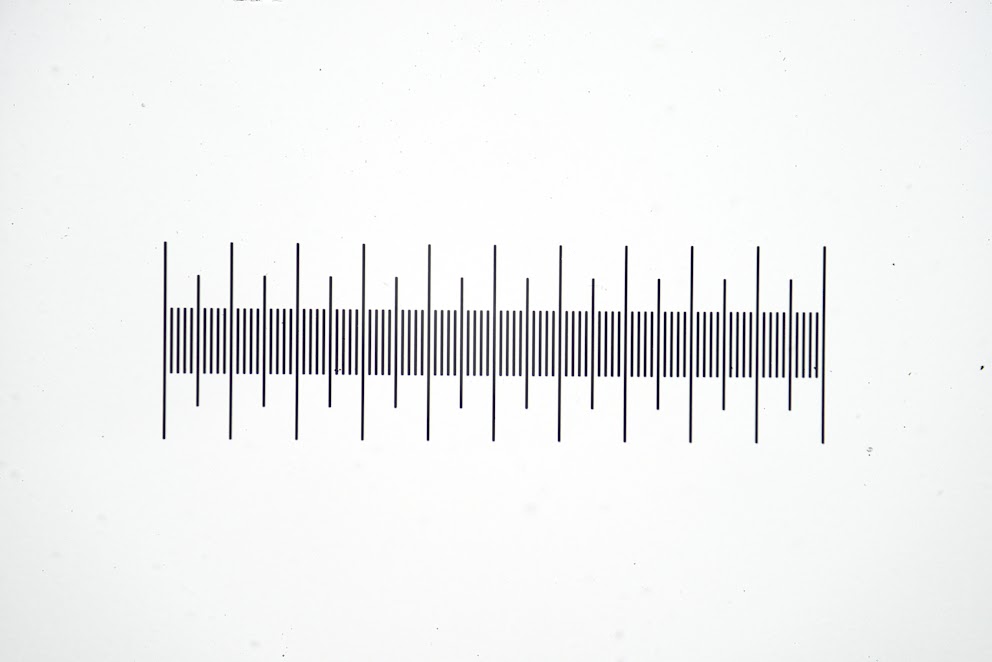
Stage micrometer viewed through an OMAX achromatic 10X NA0.25 160/0.17 objective lit through an OMAX dry brightfield Abbe NA1.25 condenser captured by a Nikon D800 with AmScope 2X SLR camera adapter
Meiji plan 10X NA0.25 160/0.17 objective (Ebay)

Stage micrometer viewed through a Meiji plan 10X NA0.25 160/0.17 objective lit through an OMAX dry brightfield Abbe NA1.25 condenser captured by an OMAX 14.0MP USB3.0 camera with 0.5X adapter

Stage micrometer viewed through a Meiji plan 10X NA0.25 160/0.17 objective lit through an OMAX dry brightfield Abbe NA1.25 condenser captured by a Nikon D800 with AmScope 2X SLR camera adapter
AmScope plan 20X NA0.40 160/0.17 objective (info, Amazon)
Coming soon, I hope.
OMAX achromatic 40X NA0.65 (spring) 160/0.17 objective (info, Amazon)

Stage micrometer viewed through an OMAX achromatic 40X NA0.65 (spring) 160/0.17 objective lit through an OMAX dry brightfield Abbe NA1.25 condenser captured by an OMAX 14.0MP USB3.0 camera with 0.5X adapter

Stage micrometer viewed through an OMAX achromatic 40X NA0.65 (spring) 160/0.17 objective lit through an OMAX dry brightfield Abbe NA1.25 condenser captured by a Nikon D800 with AmScope 2X SLR camera adapter
Meiji plan 40X NA0.65 (spring) 160/0.17 objective (Ebay)
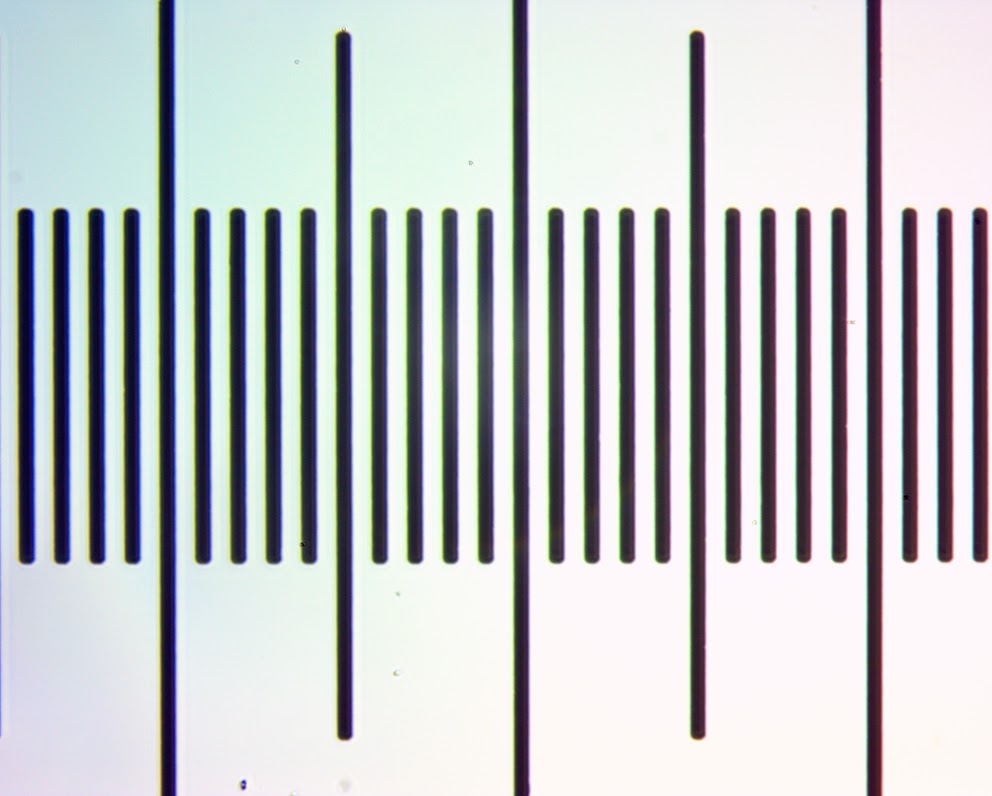
Stage micrometer viewed through a Meiji plan 40X NA0.65 (spring) 160/0.17 objective lit through an OMAX dry brightfield Abbe NA1.25 condenser captured by an OMAX 14.0MP USB3.0 camera with 0.5X adapter

Stage micrometer viewed through a Meiji plan 40X NA0.65 (spring) 160/0.17 objective lit through an OMAX dry brightfield Abbe NA1.25 condenser captured by a Nikon D800 with AmScope 2X SLR camera adapter
Unbranded infinity plan 40X NA0.65 -/0.17 objective (Ebay)
Coming soon, I hope.
Zeiss 46 18 40 planapo 63X NA1.40 160/- objective (Ebay)
Coming soon, I hope.
AmScope plan 100X NA1.25 160/0.17 objective (info, Amazon)
Coming soon, I hope.
OMAX achromatic 100X NA1.25 160/0.17 objective (info, Amazon)
First, images without oil, which is obviously not how the lens is meant to be used, but I wanted wanted images for the sake of comparison. In particular, it was interesting how much better the SLR adapter image looked than the USB camera image without oil.

Stage micrometer viewed through an OMAX achromatic 100X NA1.25 (oil, spring) 160/0.17 objective (but using no oil for this shot) lit through an OMAX dry brightfield Abbe NA1.25 condenser captured by an OMAX 14.0MP USB3.0 camera with 0.5X adapter

Stage micrometer viewed through an OMAX achromatic 100X NA1.25 (oil, spring) 160/0.17 objective (but using no oil for this shot) lit through an OMAX dry brightfield Abbe NA1.25 condenser captured by a Nikon D800 with AmScope 2X SLR camera adapter
Now the images with oil:

Stage micrometer viewed through an OMAX achromatic 100X NA1.25 (oil, spring) 160/0.17 objective lit through an OMAX dry brightfield Abbe NA1.25 condenser captured by an OMAX 14.0MP USB3.0 camera with 0.5X adapter

Stage micrometer viewed through an OMAX achromatic 100X NA1.25 (oil, spring) 160/0.17 objective lit through an OMAX dry brightfield Abbe NA1.25 condenser captured by a Nikon D800 with AmScope 2X SLR camera adapter
Darkfield samples
I didn’t do extensive testing with the darkfield condensers yet, but here are two images of the stage micrometer. I’m not sure if I adequately adjusted the condenser and lighting for these, and I imagine a micrometer isn’t an ideal subject for darkfield, so don’t take these to be the highest manifestation of darkfield microphotography.

Stage micrometer viewed through a Meiji plan 10X NA0.25 160/0.17 objective lit through an OMAX dry darkfield NA0.7-0.9 condenser captured by an OMAX 14.0MP USB3.0 camera with 0.5X adapter

Stage micrometer viewed through a Meiji plan 40X NA0.65 (spring) 160/0.17 objective lit through an OMAX dry darkfield NA0.7-0.9 condenser captured by an OMAX 14.0MP USB3.0 camera with 0.5X adapter
Other notes
Image sensor dust
I was very pleased with the SLR adapter, but it did make me aware of the amount of fine dust on my Nikon D800’s sensor. I did take it to Burning Man three times and only cleaned it with an air pump after, so that there is dust isn’t surprising, but the extent to which it shows up in the microscope images is striking. Under normal photograph conditions, the dust particles on the sensor are basically invisible unless the dust itself is visible. Once I knew the dust was there, I was actually able to see it examining the image sensor under a bright light at a certain angle. I attempted lightly touching a cotton swab and also a piece of lens paper to the sensor to see if I could suck up the dust, but it didn’t move, and I wasn’t about to risk screwing up that sensor. I’ll have to take it in for professional cleaning and see if that resolves the (admittedly minor) issue.
Microscope head alignment
As can be seen in the 4x photo above using the Nikon D800, the OMAX microscope head is apparently not perfectly lined up with the objective lens light path. I was able to center it a bit by loosening the screw that holds the head on, but it’s not meant to be adjusted, and the microscope head ended up falling off when I tried to use it centered but loosened. I’m not sure if this is a defect or it’s within specifications but shows up particularly with SLR adapters. The problem also showed up using the darkfield condensers, but those at least have adjustment pins such that I could center the dark circle in my view, but I am now thinking the condenser should be centered on the light path despite misalignment with the microscope head. I’ll need to do more testing.
Original image files
If you are reading this (Wow, I didn’t expect this… I hope you don’t mind the mess, and nice to meet you!) and doing serious comparison, feel free to contact me for the original image files. I uploaded smaller versions above, but the originals from the OMAX USB camera are 4096x3286 pixels and the ones from the Nikon D800 are 7360x4919 pixels.


